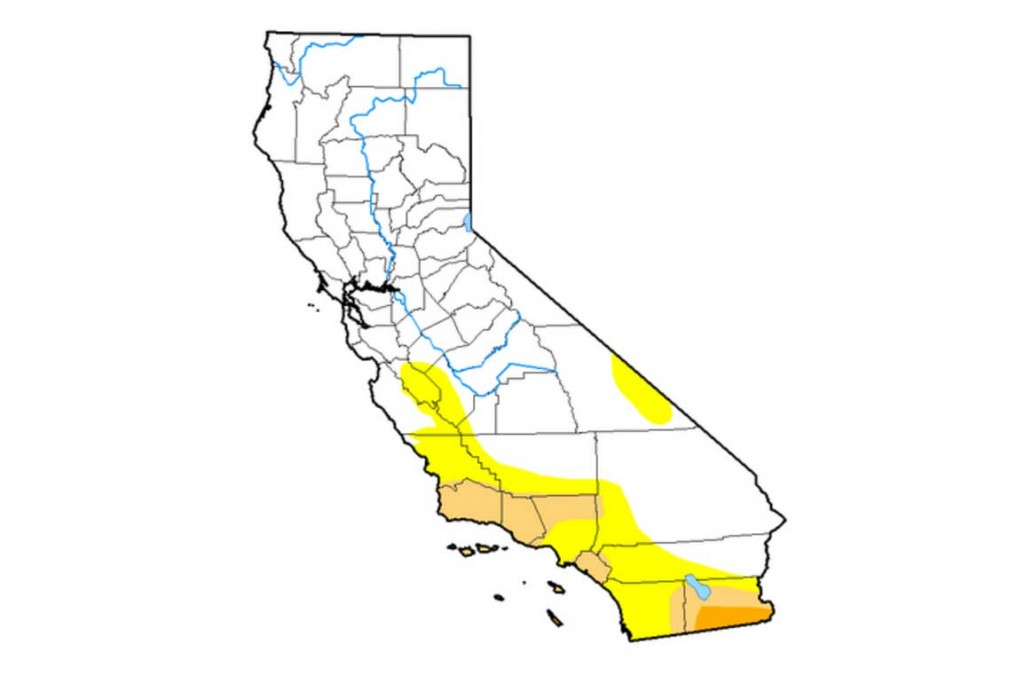California’s recent rains have ended the record-breaking drought in most of the state. The drought seemed to forecast California’s climate future, but now this year’s storms have left confusion in their wake.
Extreme weather events, like storms, floods and the California drought, are increasing globally. Understanding the connection between climate change and this extreme weather has become a hot topic for climate researchers and policymakers alike. But now, Columbia University climate expert Park Williams warned in a January talk at Stanford, the way that public figures are talking about the climate change-extreme weather connection may actually be undermining the scientific quest to accurately understand what climate change means for the future of our planet.

The problem, Williams explained, comes in oversimplifying the relationship between climate change and extreme weather events. He pointed to an example in which California Gov. Jerry Brown said that drought conditions were “the new normal” for California: a vision of permanent drought caused by climate change. This sparked pushback from many scientists. The new normal isn’t permanent drought, they said, but rather a whole new weather reality that includes more drought, more rainstorms and flooding, and a great deal of variability or “noise”: “When I see things like [Brown’s statement], I think: that’s inconsistent with my understanding of the climate in California, which is very noisy,” Williams said in his talk.
Brown is certainly not the only public figure to make a broad statement about climate change and extreme weather, but his “new normal” phrase has become a clear example of a common problem. Politicians tend to oversimplify the science, Williams said, because the public is more likely to understand an all-or-nothing story: either climate change caused an event like the drought, or it didn’t.
Brown’s “new normal” statement “implies that climate change played a dominant role in causing the extreme conditions in 2014/2015,” Williams said. But nature is much more complex than political messaging, and that can cause serious credibility problems for scientists when events like the drought inevitably end: “If you tell the public that climate change is entirely responsible for something, or if you tell the public that climate change is entirely not responsible for something,” Williams said, “then you are setting them up to discover that you were wrong, and then decide that nothing you said is to be trusted at all.”
So how much does climate change really deserve for the California drought? To figure that out, Williams looked at evaporation data from many different climate models and determined how the California drought was different from other recent droughts. He then used temperature data to estimate to what extent these conditions were caused by climate change, since higher rates of evaporation would likely occur under higher temperatures. He knew that climate change could influence the drought in other ways, but only chose to examine evaporation in his study.
At the end of his analysis, Williams came up with a relatively small number: evaporation from climate change was responsible for between 7 and 22 percent of the California drought. But in his talk, he made the case that this result represents big changes ahead for our planet. “While we’ve picked up on this relatively small influence right now, we can see the pace that these trends should be moving,” Williams said. He and other scientists suspect that climate change will contribute more to drought conditions in the future.
So how might public figures better communicate about this problem without falling back to the all-or-nothing story? The first step, Williams said, is to communicate the inevitable uncertainty in scientific results. Richard Nevle, an Earth Systems lecturer at Stanford who attended Williams’ talk, said that “we just have to do a better job connecting the idea of scientific uncertainty to the kinds of uncertainty we have to navigate in every day life – the chance of rain, or the possibility of getting into a car accident.” (EDITOR’S NOTE: Peninsula Press is a project of the Stanford Journalism Program.)
If public figures communicate that uncertainty is very normal in scientific results, and that science still has immense meaning and importance in our society, then it won’t come as a surprise for the general public that climate change doesn’t have an all-or-nothing effect on extreme weather, but instead influences it to a measurable degree. Then, we can begin to tweak the language to explain this connection: “If instead [Jerry Brown said] this drought is being influenced by climate change … and droughts like the current one are probably going to become more likely in the future,” Williams said, “[that would lead] to a more educated society that’s not going to be confused and surprised when the drought inevitably does end.”
UPDATE: On April 7, 2017, Gov. Jerry Brown declared the end of California’s drought state of emergency, citing high winter rain/snow and water conservation efforts.
